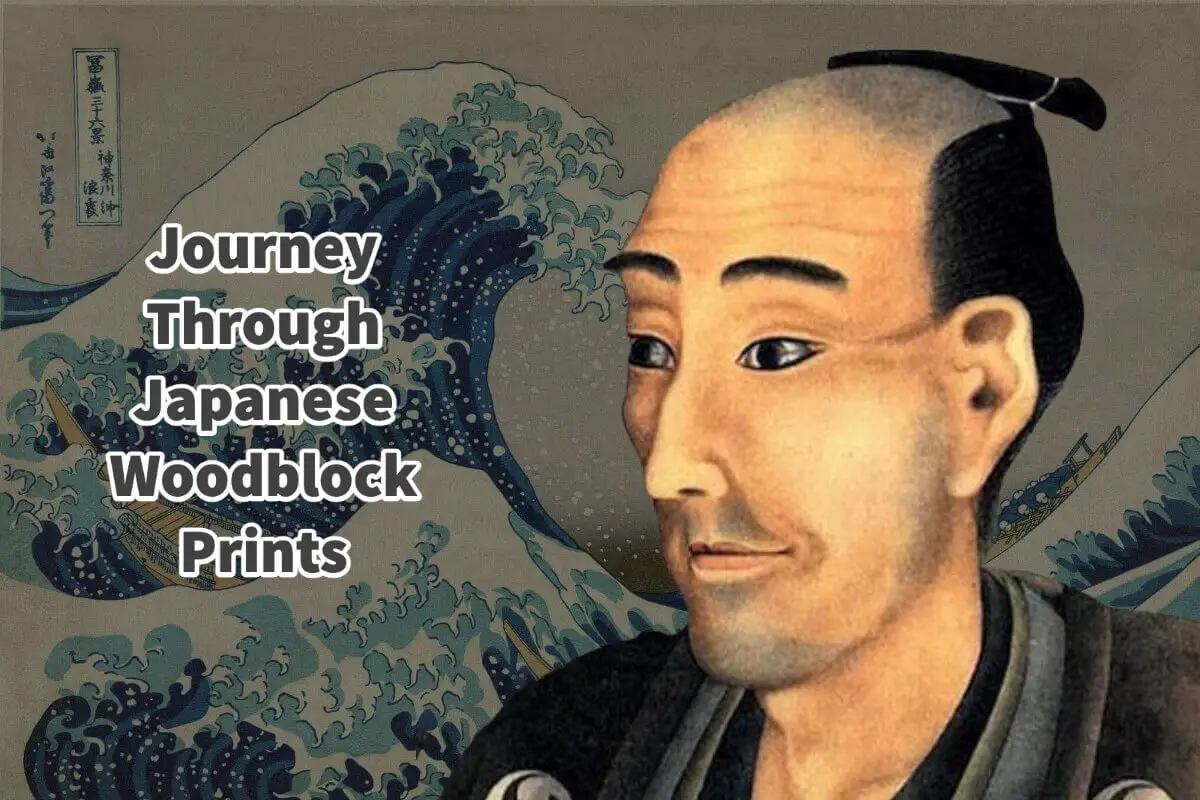One of my favorite Japanese art forms is the Japanese woodblock prints. These Japanese woodblock prints continue to inspire many artists – myself included.
Japanese woodblock prints are a unique and beautiful form of art that has captivated people for centuries. These prints are famous for their vibrant colors, intricate designs, and attention to detail. They provide a glimpse into the world of Japan during the Edo period (1603-1868) and a testament to the artistic skill and creativity of the people of that time.
Table of Contents
- History Of Japanese Woodblock Prints:
- Why Japanese Woodblock Prints Are Important:
- Japanese Woodblock Prints Influenced Western Art
- 10 Important Japanese Woodblock Print Artist And Their Work
- Every Artist Can Learn From Japanese Woodblock Prints
- Japanese Woodblock Prints Are An Important Artistic Heritage
- Even today, Woodblock Prints Are Prized Collections
- Related Questions
Read on as we will take you on a journey through the history of Japanese woodblock prints and explore why they are such important works of art.
History Of Japanese Woodblock Prints:
The history of Japanese woodblock prints dates back to the 8th century when Japan was heavily influenced by Chinese art and culture. At this time, woodblock printing was used mainly for Buddhist texts and other religious materials.
In the Edo period in Japan, woodblock printing became a popular art form in Japan.
Japanese Woodblock Prints And The Edo Period In Japan
During the Edo period (1603-1868), Japan was largely removed from the outside world. This was due to a policy of isolationism that was put in place by the ruling shoguns.
As a result of Japan being cut off from the rest of the world, Japanese culture began to flourish uniquely.
One of the most important developments during this time was the rise of the merchant class. These wealthy merchants had money to spend on luxuries such as art, which led to a boom in the production of woodblock prints.
Early Japanese Woodblock Prints Were Book Illustrations
In the early Edo, woodblock prints were mainly used for book illustrations and single-sheet prints. However, as the demand for these prints grew, artists began experimenting with new styles and techniques.
Emergence Of Ukiyo-e Japanese Woodblock Prints
As the merchant class in Japan started to grow, so did their desire for woodblock prints. Artists started to produce things the new merchant class wanted to purchase.
All this led to the emergence of ukiyo-e art; the word ukiyo-e translates to “pictures of the floating world.” Ukiyo-e prints depicted scenes from everyday life and was often colorful and vibrant. They were produced in large quantities and were affordable for the masses.
As ukiyo-e became more popular, artists began to specialize in different styles. Some focused on landscapes, while others specialized in portraits of beautiful women (bijin-ga) or actors (yakusha-e). These artists developed unique styles and techniques; collectors highly sought their prints.
Why Japanese Woodblock Prints Are Important:
Japanese woodblock prints are essential works of art for several reasons. Here are some significant reasons why Japanese Woodblock prints are an essential art form.
Japanese Woodblock Prints Give Us A Glimpse Into The Edo Period In Japan
The Japanese woodblock prints provide a glimpse into the world of Japan during the Edo period. They depict scenes from everyday life, such as festivals, landscapes, and portraits of people. These prints provide a window into a world that would otherwise be lost to history.
Japanese Woodblock Prints Show Great Technical Skill And Creativity
Japanese woodblock prints are essential works of art because of their technical skill and creativity. Creating a woodblock print is complex and requires great skill and precision.
The artist must first sketch the design, which is then carved onto a woodblock by a skilled craftsman. The woodblock is then inked and pressed onto paper to create the final print. This process requires great skill and attention to detail, and the resulting prints are intricate and beautiful works of art.
Japanese Woodblock Prints Influenced Western Art
Japanese woodblock prints are essential works of art because they influence Western art. In the 19th century, Western artists became fascinated with Japanese art, particularly Japanese woodblock prints.
The vibrant colors and intricate designs of these prints were a departure from the traditional styles of Western art and profoundly impacted modern art’s development.
Japanese woodblock prints influenced Western artists, such as Claude Monet, Vincent Van Gogh, and Paul Gauguin. You can see the influence of Japanese Woodblock prints in their art
10 Important Japanese Woodblock Print Artist And Their Work
Here are ten essential Japanese woodblock print artists, along with the years they lived, why they are essential, and some essential Western artists influenced by their work.
Hokusai (1760-1849)

Katsushika Hokusai is one of the most important Japanese artists of all time. He created thousands of works over his long career and is best known for his series “Thirty-six Views of Mount Fuji,” which includes the iconic “The Great Wave off Kanagawa.” Hokusai’s color, composition, and perspective influenced many Western artists, including Vincent van Gogh and Claude Monet.

Perhaps no other Japanese Woodblock print artist is as famous as Hokusai. Even today, his “The Great Wave off Kanagawa” series remains a famous work of art.
Hiroshige (1797-1858)
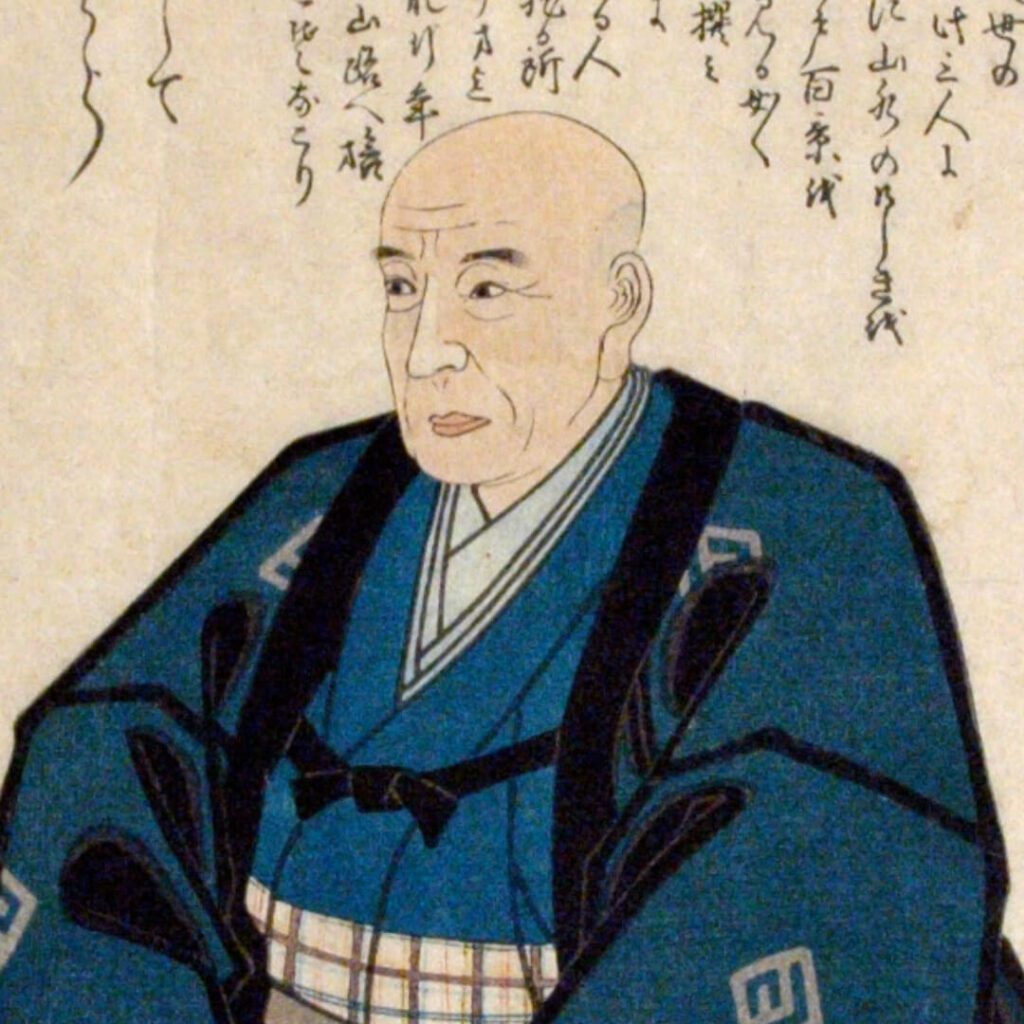
Utagawa Hiroshige is known for his landscape prints depicting everyday life scenes. His most famous series is “The Fifty-three Stations of the Tokaido,” which depicts the journey between Edo and Kyoto.
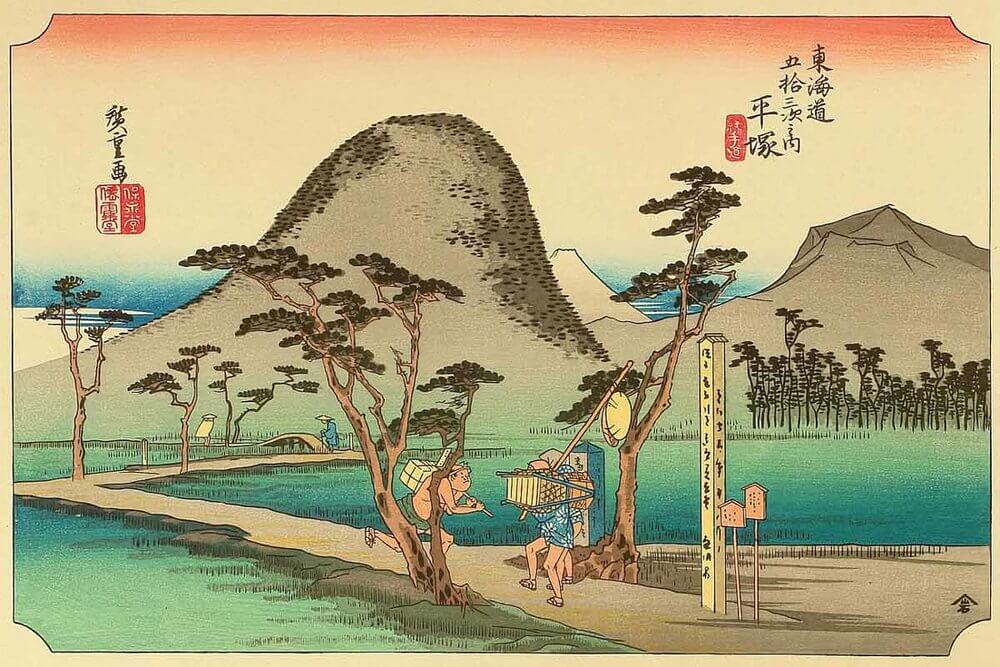
Hiroshige’s use of color and his ability to capture the beauty of nature influenced many Western artists, including Vincent van Gogh and James McNeill Whistler.
Utamaro (1753-1806)

Kitagawa Utamaro is known for his portraits of beautiful women and actors. His most famous print is “The Three Beauties of the Present Day,” which shows three courtesans.

Utamaro’s use of color and ability to capture women’s beauty influenced many Western artists, including Henri de Toulouse-Lautrec and Gustav Klimt.
Toyokuni (1769-1825)
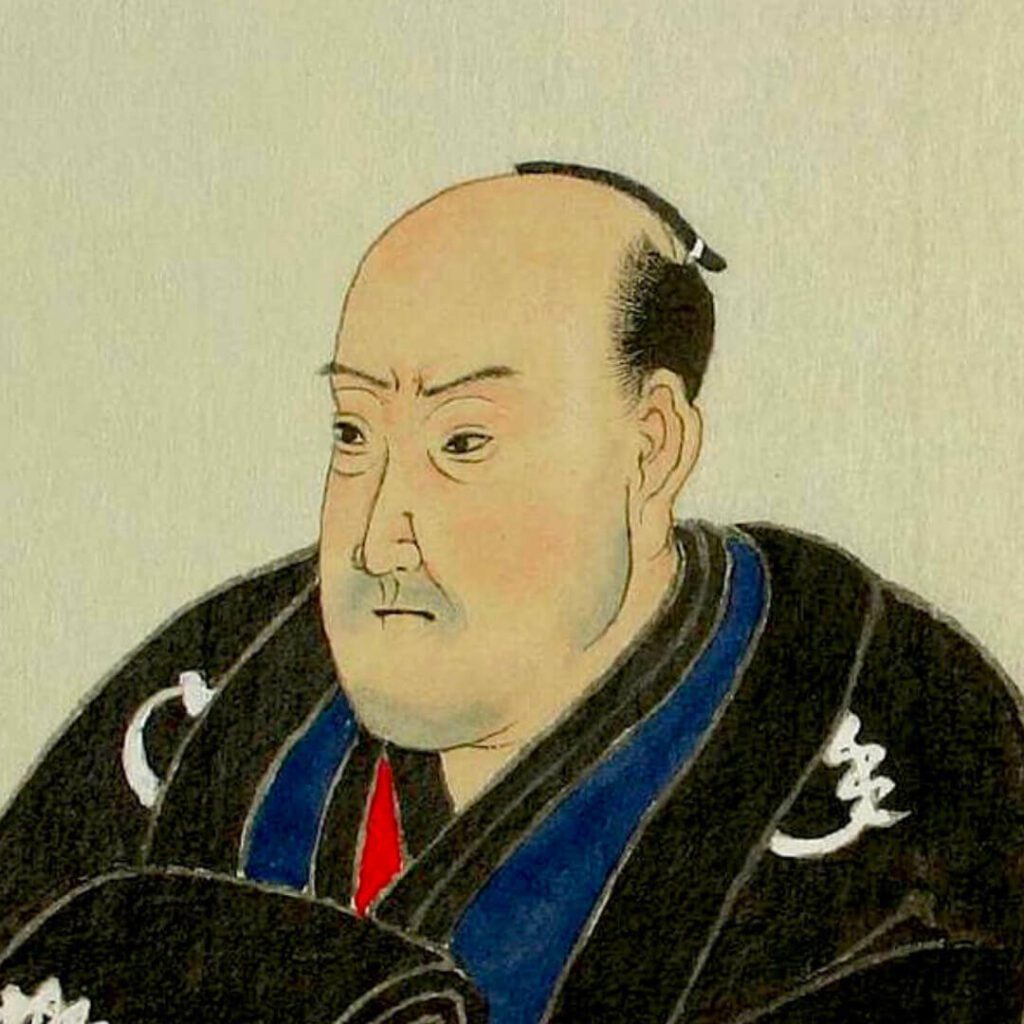
Utagawa Toyokuni is known for his actor prints and kabuki scenes. His prints are known for their vibrant colors and intricate designs.

Toyokuni’s use of color and ability to capture the energy of actors and the theater influenced many Western artists, including Henri de Toulouse-Lautrec and Pablo Picasso.
Kunisada (1786-1865)
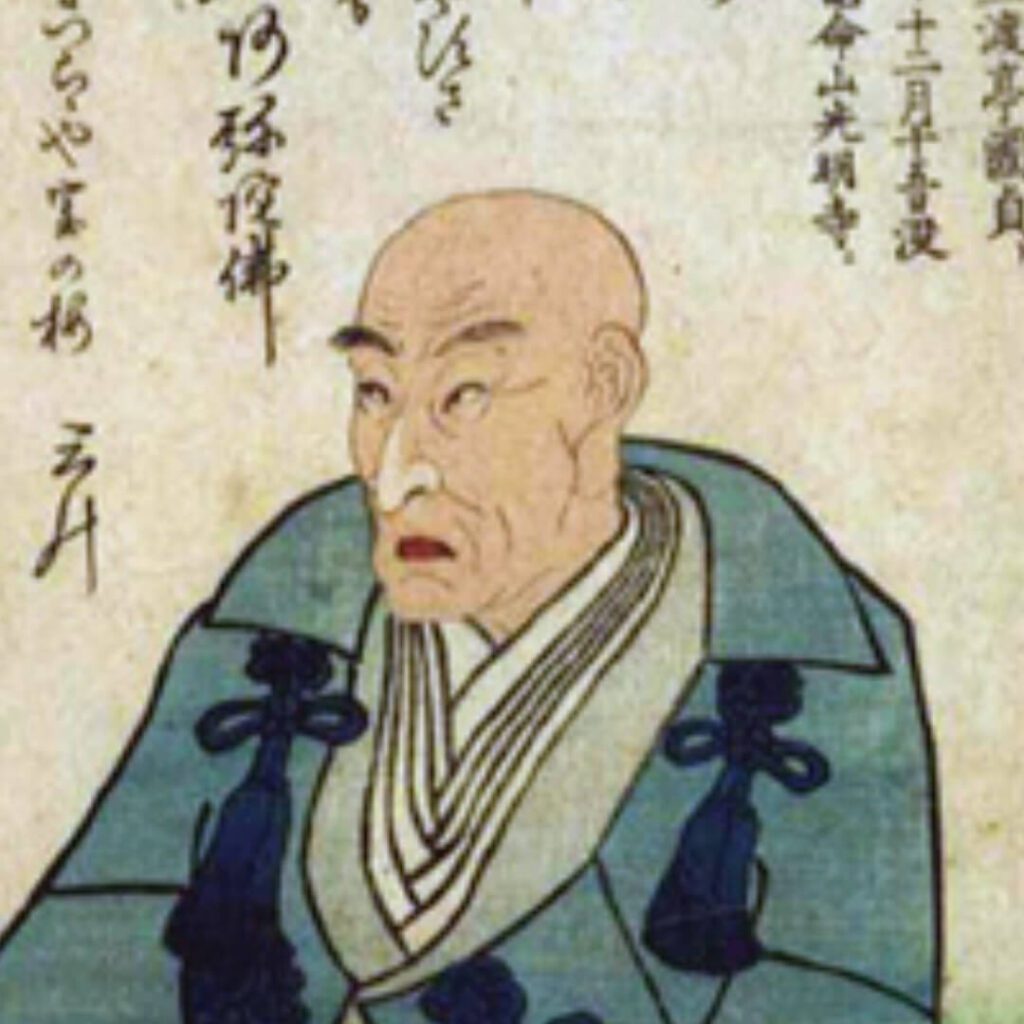
Utagawa Kunisada is known for his portraits of beautiful women and actors. His prints are known for their intricate designs and vibrant colors.
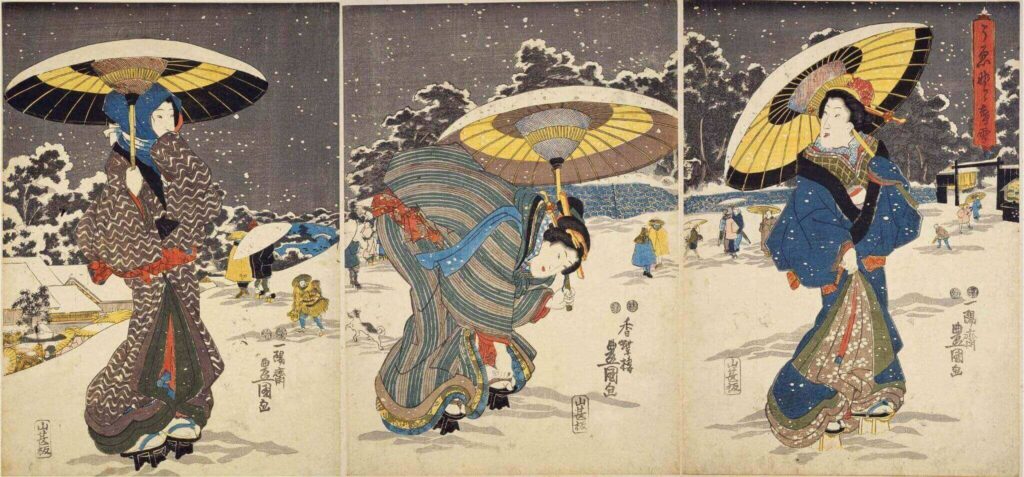
Kunisada’s ability to capture the beauty and grace of women and actors influenced many Western artists, including Edgar Degas and Mary Cassatt.
Yoshitoshi (1839-1892)

Tsukioka Yoshitoshi is known for his historical and supernatural prints. His most famous works include “One Hundred Aspects of the Moon” series and “The Story of the Loyal Retainers.”
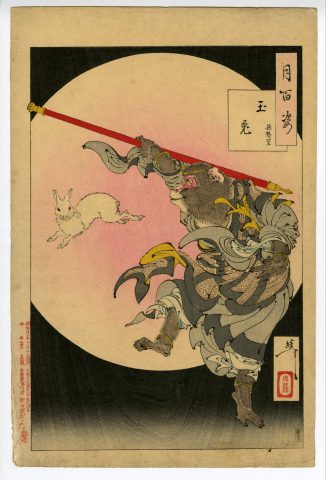

Yoshitoshi’s use of color and his ability to capture the drama and emotion of his subjects influenced many Western artists, including Vincent van Gogh and Edvard Munch.
Sharaku (active 1794-1795)
Toshusai Sharaku is known for his portraits of kabuki actors. He was only active briefly, but his works are considered some of the most striking and innovative in Japanese woodblock printing.

Sharaku’s bold lines and simplified forms influenced many Western artists, including Pablo Picasso and Henri Matisse.
Shunsho (1726-1792)
Katsukawa Shunsho is known for his kabuki prints and portraits of beautiful women. His prints are known for their elegant designs and use of color.
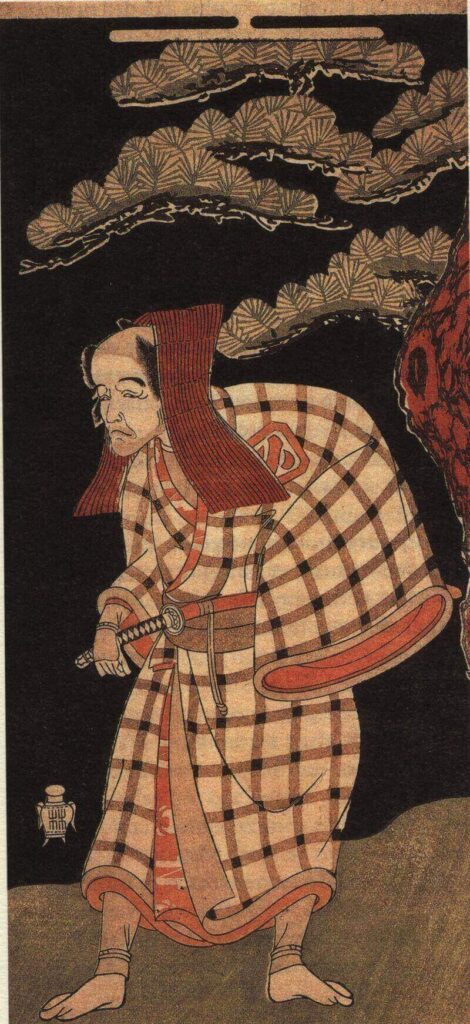
Shunsho’s ability to capture the beauty of women and actors influenced many Western artists, including Edgar Degas and Mary Cassatt.
Kiyonaga (1752-1815)
Torii Kiyonaga is known for his portraits of beautiful women and prints of everyday life. His prints are known for their delicate designs and use of color.
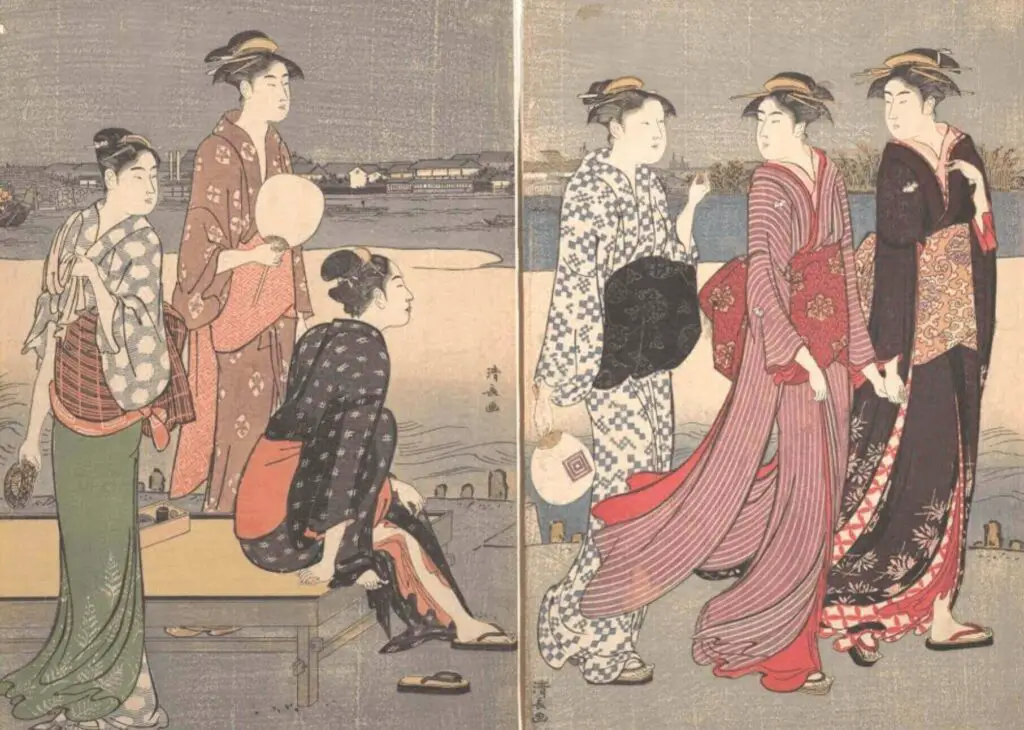
Kiyonaga’s ability to capture the beauty of women and scenes from everyday life influenced many Western artists, including Pierre-Auguste Renoir and Henri de Toulouse-Lautrec.
Harunobu (c. 1724-1770)
Suzuki Harunobu is known for his bijin-ga and prints of everyday life. He is considered one of the pioneers of ukiyo-e. His prints are known for their use of delicate colors and intricate designs.
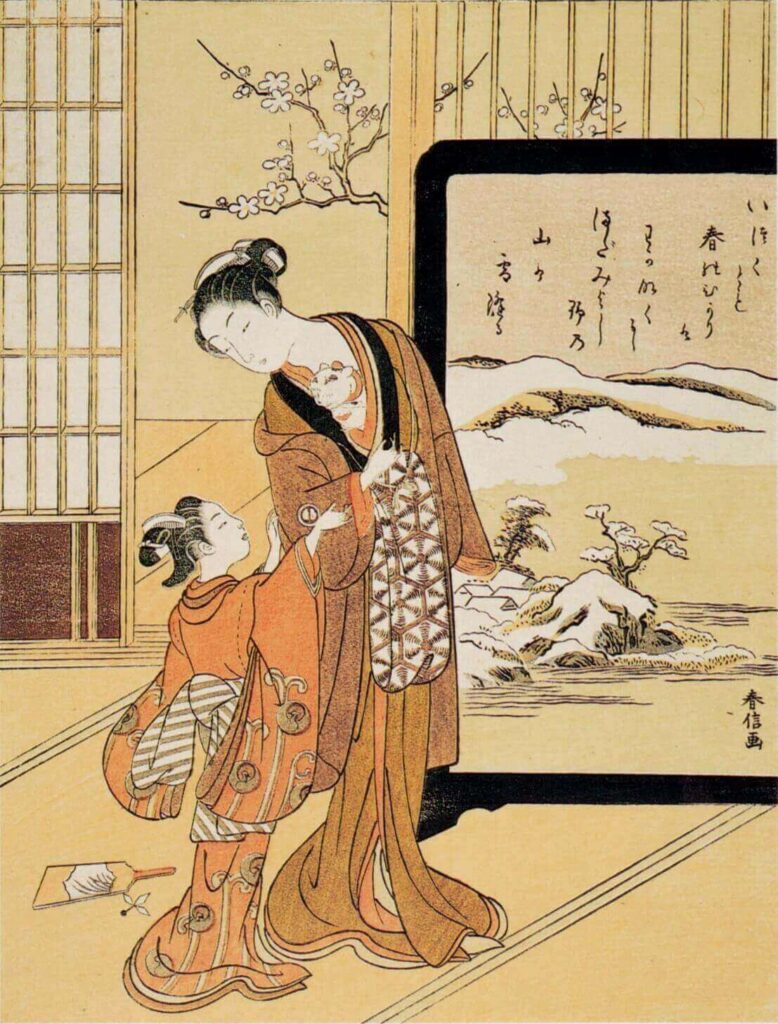
Harunobu’s ability to capture the beauty of women and scenes from everyday life influenced many Western artists, including Edgar Degas and Henri de Toulouse-Lautrec.
Each of these artists made significant contributions to the art of Japanese woodblock printing. Their prints are celebrated for their beauty, technical skill, and historical significance.
Every Artist Can Learn From Japanese Woodblock Prints
We can see that many famous Western artists have learned and discovered Japanese woodblock prints. The inspiration they received from these prints changed the art world.
Artists can learn a lot from these artists, including their use of color, composition, and perspective. They can also learn how these artists captured the beauty of everyday life and the natural world.
We can also be inspired by how these artists experimented with new techniques and styles and were unafraid to take risks in their work.
It is because of this that Japanese woodblock print artists have made a significant impact on the world of art. Their use of color, composition, and perspective influenced many Western artists, and their ability to capture the beauty of everyday life and the natural world continues to inspire artists today.
Japanese Woodblock Prints Are An Important Artistic Heritage
Japanese woodblock prints are an essential part of Japan’s artistic heritage. They are celebrated for their beauty, technical skill, and historical significance.
The woodblock prints provide a glimpse into a world that would otherwise be lost to history, and their influence on Western art cannot be overstated. Japanese woodblock prints are a must-see whether you love art or appreciate the beauty of nature and everyday life.
The woodblock prints embody Japan’s cultural, social, and economic values during the Edo period and are thus of great historical value. The intricate and varied designs of the prints speak to the creativity and skill of the artists, who were able to capture various scenes and emotions through their work.
Even today, Woodblock Prints Are Prized Collections
In addition to their cultural and historical significance, Japanese woodblock prints are also highly collectible. The original Japanese woodblock prints are prized by art collectors and enthusiasts worldwide and are often sold for large sums.
The rarity, beauty, and historical significance of these prints make them highly sought after, and they are a testament to the enduring appeal of Japanese art.
That is why Japanese woodblock prints are essential to Japan’s artistic heritage. They provide a window into a world that would otherwise be lost to history and is a testament to the creativity, skill, and cultural values of the people of Japan during the Edo period.
They had a profound influence on the development of modern art and continue to captivate audiences around the world. Whether you are an art lover or appreciate the beauty of everyday life, Japanese woodblock prints are a must-see.
Anita Louise Art is dedicated to art education, great artists, and inspiring others to find and create their art. We love art that uplifts and inspires. #ArtToMakeYouSmile! #ArtToMakeYouHappy!
If you are interested to see any of my art, you can find out more by clicking here. If you are interested in what inspires me and my paintings, you can discover more by clicking here.
We have a free newsletter and would love you to be part of our community; you can subscribe to the newsletter by clicking here. If you have any questions, I would be happy to talk to you. You can reach me, Anita, by clicking here.
Subscribe to our Anita Louise Art YouTube Channel filled with great videos and information by clicking here.
Join us for our podcast “5 Minutes With Art.” Spend just 5 minutes a week with us to discover and learn about great art and artists. You can find out more about our podcast by clicking here.
Related Questions
What Are Some Japanese Woodblock Print Characteristics?
There are many characteristics of a Japanese woodblock print, from the woodblock print title, artist name, and publisher’s seal; other features also include the color and subject matter. Japanese woodblock prints also have different artistic art movements.
By clicking here, you can learn more by reading What Are Some Japanese Woodblock Print Characteristics?.
What Is A Japanese Woodblock Print?
A Japanese woodblock print is, as the name implies, a print that is made by using carved woodblock and applying ink on the woodblocks to print a design on paper. The Japanese woodblock artists used woodblocks to print artistic prints and even books. Artists have used the woodblock print technique in Japan for hundreds of years.
You can learn more by reading What Is A Japanese Woodblock Print? by clicking here.
What Does Japonisme Mean?
The term Japonisme is about the influence of Japanese art on European culture and arts. Most notably, Japanese woodblock prints influenced the Impression art movement. Many prominent artists from the Impressionism art movement were inspired by the Japanese Ukiyo-e woodblock print artists.
You can learn more by reading What Does Japonisme Mean? by clicking here.

